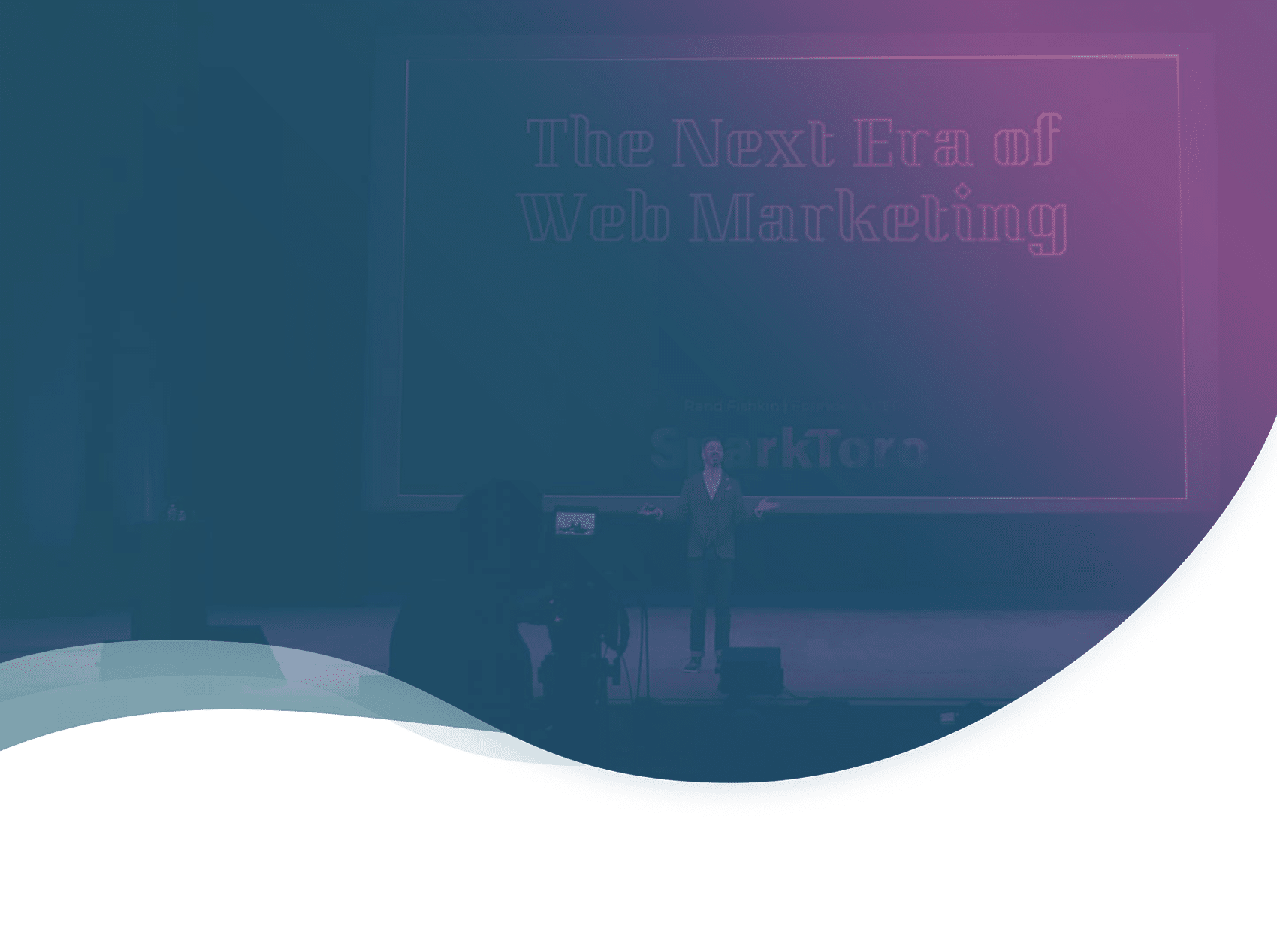What if the GAFAs had broken the internet? What if we were witnessing the end of an incredible era on the web for SMEs? We sensed that there was something going on when we listened to the first ten minutes talk at the IMF by Rand Fishkin, global SEO star and founder of Moz.
We had the opportunity to interview Rand following his talk in order to discuss the future of SEO and opportunities for SMES. Between lucid facts and figures, pragmatic foresight and creative optimism, here is a condensed summary of Rand’s talk and our interview.
• The four problems with the web in 2019
• 5 tips for B2B SMEs
• 5 tactics for marketers
Rand Fishkin founded Moz, the software developer of MOZ SEO, which has become one of the best tech nuggets in the world. For all that, Rand hasn’t forgotten where he comes from, with an entrepreneur mother and a grandfather who helped him decipher Google’s algorithm patents.
This love for SMEs and passion for algorithms have made him the SEO guru that he is today, able to methodically diagnose web-marketing developments. He has also condensed all of his previous advice for business founders in his book “Lost and founder”.
In recent years, Rand has also become a true whistleblower regarding the monopolies of tech giants like Google or Facebook, criticising Google’s plans to hide URLs, YouTube’s updates to manage videos embedded on websites, or the abuse of Google’s dominant position for using third-party content and twisting it for its own benefit. All this with the aim of allowing new SMEs to emerge:
1/ The 4 riders of today’s web apocalypse
1.1/ Google: what if the devil was already among us?
“Don’t be evil”, they used to say at Google. But is it too late? That’s up to you to decide.
Here are the facts: for a long time, the market’s leading search engine has left space for organic results, that is, non-sponsored and coming from sites other than Google. The search engine simply returns results and sends traffic towards these websites.
But this is changing, whereas before organic results represented nearly 100% of traffic, ads have taken more than 6% of computer clicks, and nearly 9% on mobile. And this is not likely to improve in light of the tests carried out recently…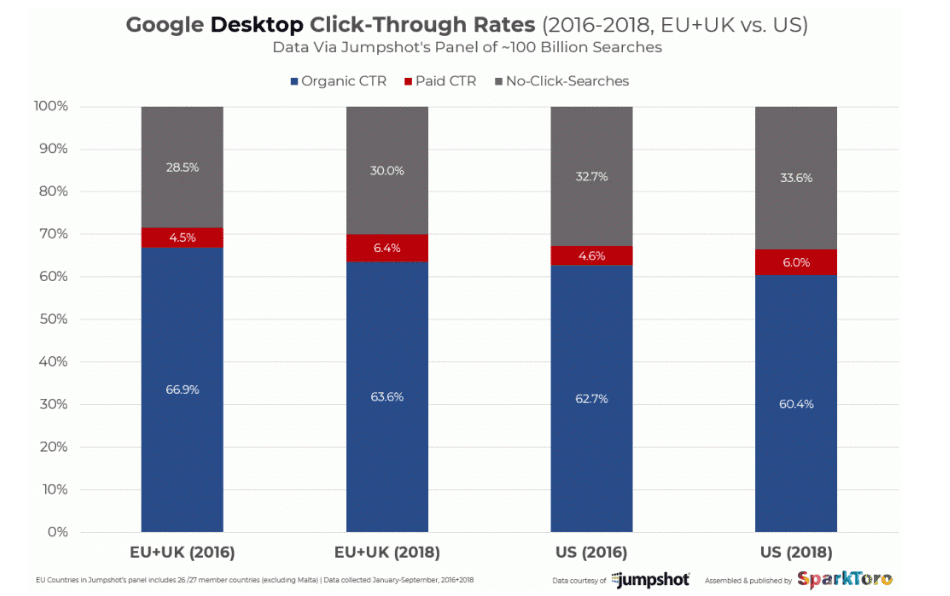
While the world criticizes the massive addition of advertising, it is in fact Google that is scrapping websites and stealing content, sometimes without any direct citation in its results. Google penalises sites for having duplicate content, but itself promotes its duplicate content in search results…
Here, for example, Google cites its source clearly, but does not send any traffic because the web user will get the response directly in the results page:
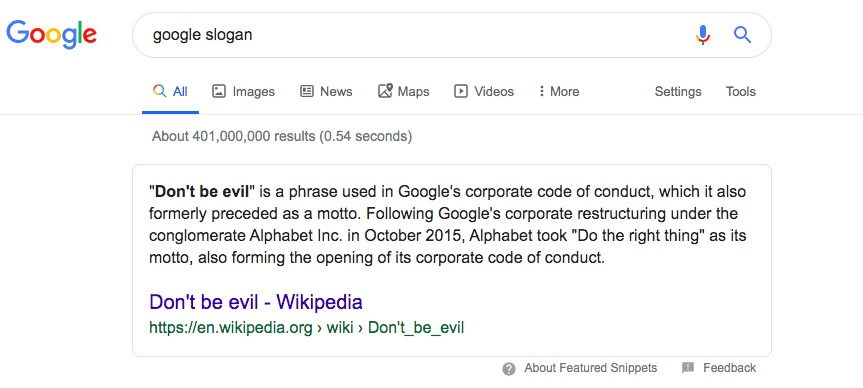
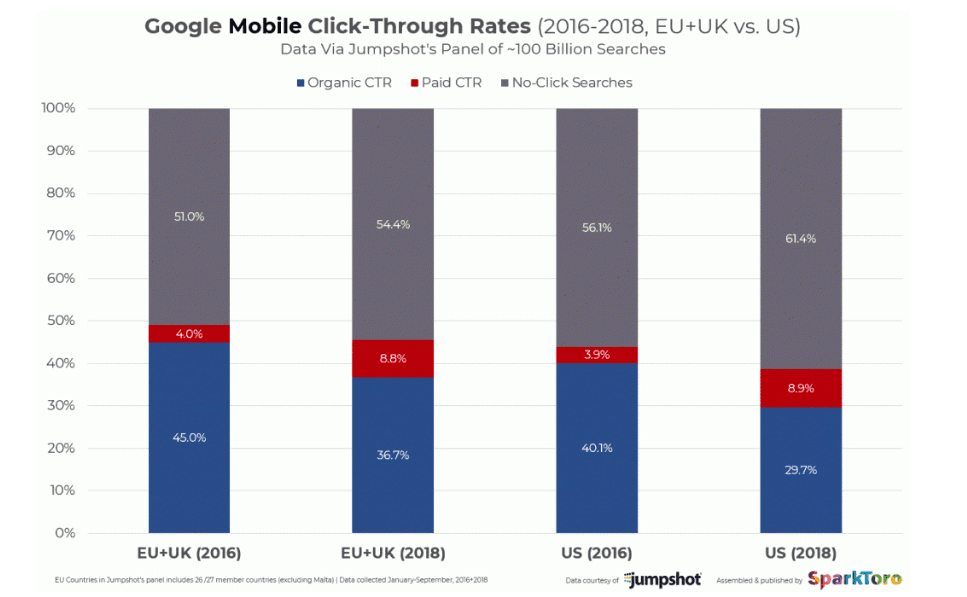
Let’s look at a practical example:
For a query searched 1000 times per month, the number one spot could hope to capture 40% of this traffic, or 400 visitors just a few years ago.
In 2019, for this same query, the click potential would be no more than around 250 visitors. The business potential has nearly halved.
These fears are confirmed by the software ahrefs which estimates a click rate of 47% on this request “slogan google”: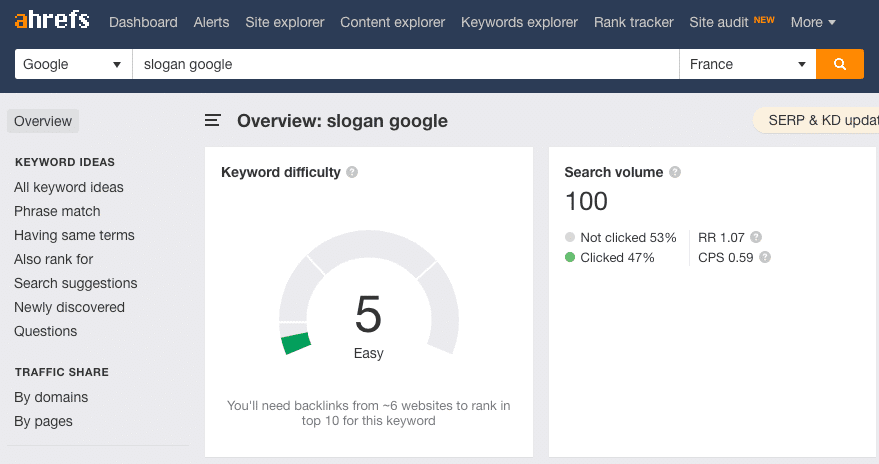
1.2/ Social media: more media than social
Tweet, like, comment, buzz… community management has had the wind in its sails for five years now, yet more and more sceptics are arriving, and for good reason: Facebook’s “Reach” down, ROI hard to prove, a world of fakery, and traffic sent in constant decline.
For example, the latest study by Shareaholic demonstrates that traffic sent by social networks peaked in 2015, and has been in constant decline since: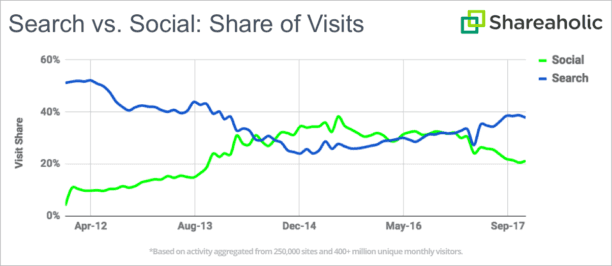
1.3/ Fake it until you make it, the world of influence
In the world of influence, appearance is King. We simply have to analyse Trump’s account with the tool Fake Followers Audit by SparkToro to realise: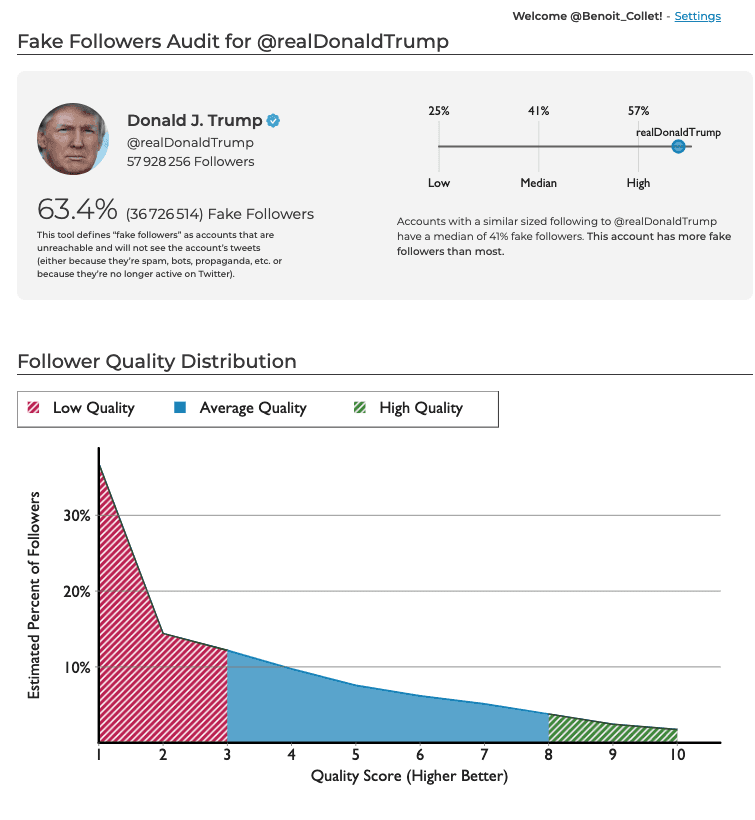
But why would influencers bother? As mentioned by Rand, who has managed to gather feedback from the experience of influencers, brands are not even asking for numbers to measure the return on investment of their campaigns….
Influence can therefore be summarised by this brilliant slide at Rand’s talk at Inbound Marketing France: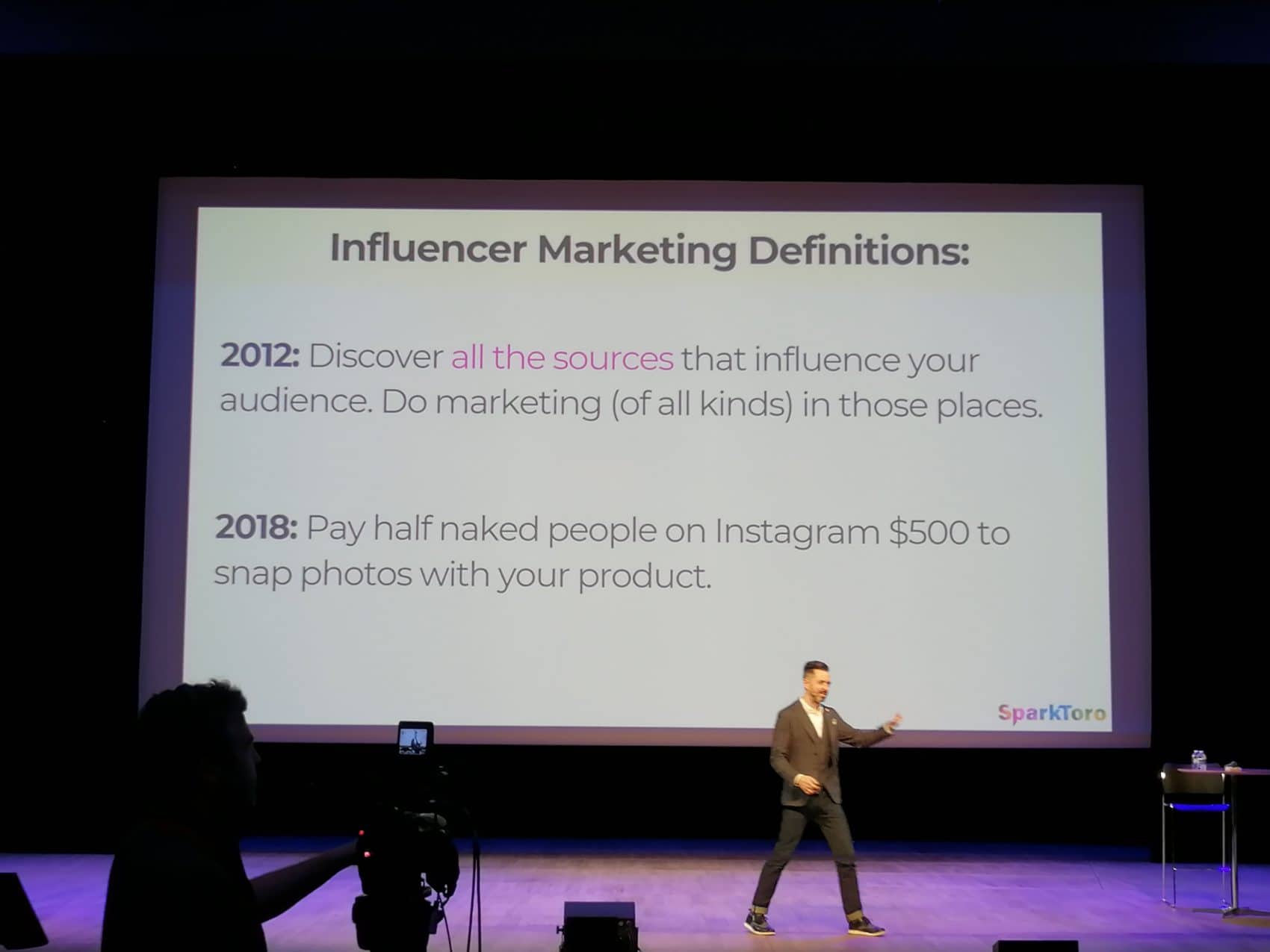
1.4/ The return on investment for advertising is trending towards zero
The world’s tendency to monopolise is having indirect effects on the digital advertising market. Investment funds flood start-ups with capital, the main aim of which is growth. The problem is that growth does not mean profitability, which pushes businesses to enter unhealthy bidding competitions, even if it means having an unprofitable acquisition cost. This thereby considerably reduces the profitability of SEA campaigns and provokes barriers to entry for SMEs.
Let’s take the example of a company wanting to launch CRM software. It will cost between £18 and £60 to have a chance of appearing at the top of the first page for the keyword “CRM software”. With a high conversion rate of 10% (five times the average in B2B, supposing that you have a good landing page), this gives us a cost per lead of £180 to £600.
If we choose the lower range of £180, and we take our figures mentioned in our infographics on the marketing funnel, here are the costs off the different stages of the funnel:
Qualified lead: £360
Opportunity: £1200
Customer: £6000
Except that this represents ONLY the costs of digital advertising, to which you have to add the human costs. In brief, there is a strong likelihood that this advertising would result in a loss!
Rand suggests that this will eventually harm everyone in the long term, even the giants of tech.
The founder of Moz therefore paints a very pessimistic, but realistic, picture of web marketing in 2019. This analysis is needed to develop and improve our practices as SMEs.
As our American guru is not only an expert in SEO, but above all an entrepreneur, he offers us an overview of the strategies available for SMEs, and B2B marketers.
2/ 5 Rand Fishkin’s advice for B2B SMEs
2.1/ Find your market niche
To the questions that we were able to ask Mr Fishkin on ever-fiercer competition and the monopolies of tech giants, he responded:
“If you want to stand out as a small business, you have to be ready to do the things that large companies cannot or do not want to do, meaning lots of creativity and innovation around the product and marketing. “
Before thinking of channels and SEO tactics, it’s essential to have a product that makes you stand out.
And to stand out, there is nothing better than hyper-specialisation, which give you unique granularity in your market and your marketing.
Rand gave this example: “instead of saying that you’re going to compete with Gmail and become an email provider, you say: we know that PR specialists in Europe have a very specific process that they use to generate their emails and we want to be able to offer them a better inbox experience. It is a very limited market, but you can serve it better than anyone else.”
It’s kind of like the Blue ocean strategy, which consists in finding your differentiating factor in order to no longer have any direct competition.
2.2/ Choose your battles
According to Rand, from ten business who launch themselves into content creation, only two to three will really succeed in getting a good return on investment.
If a business wants to perform in content and SEO, they have to really invest in it over the long term. It isn’t possible to expect results from a team that doesn’t have the resources to create content and to build an inbound mechanism.
Otherwise, there are plenty of other strategies to bring in business: publicity, press relations, prospecting etc. They are not contradictory, but for an SME starting to acquire customers, it will be complicated to do everything at once.
2.3/ Create a positive spiral, then find growth hacks, not the reverse
Growth hacking is a trendy term, to such a point that all marketers have asked themselves the question “should I add growth hacker to my LinkedIn profile?”
Rand believes that you should first put in place a positive spiral in your marketing. Each strategy will have its own mechanism, whether you choose to focus on publicity and press relations, events, or like here for content marketing: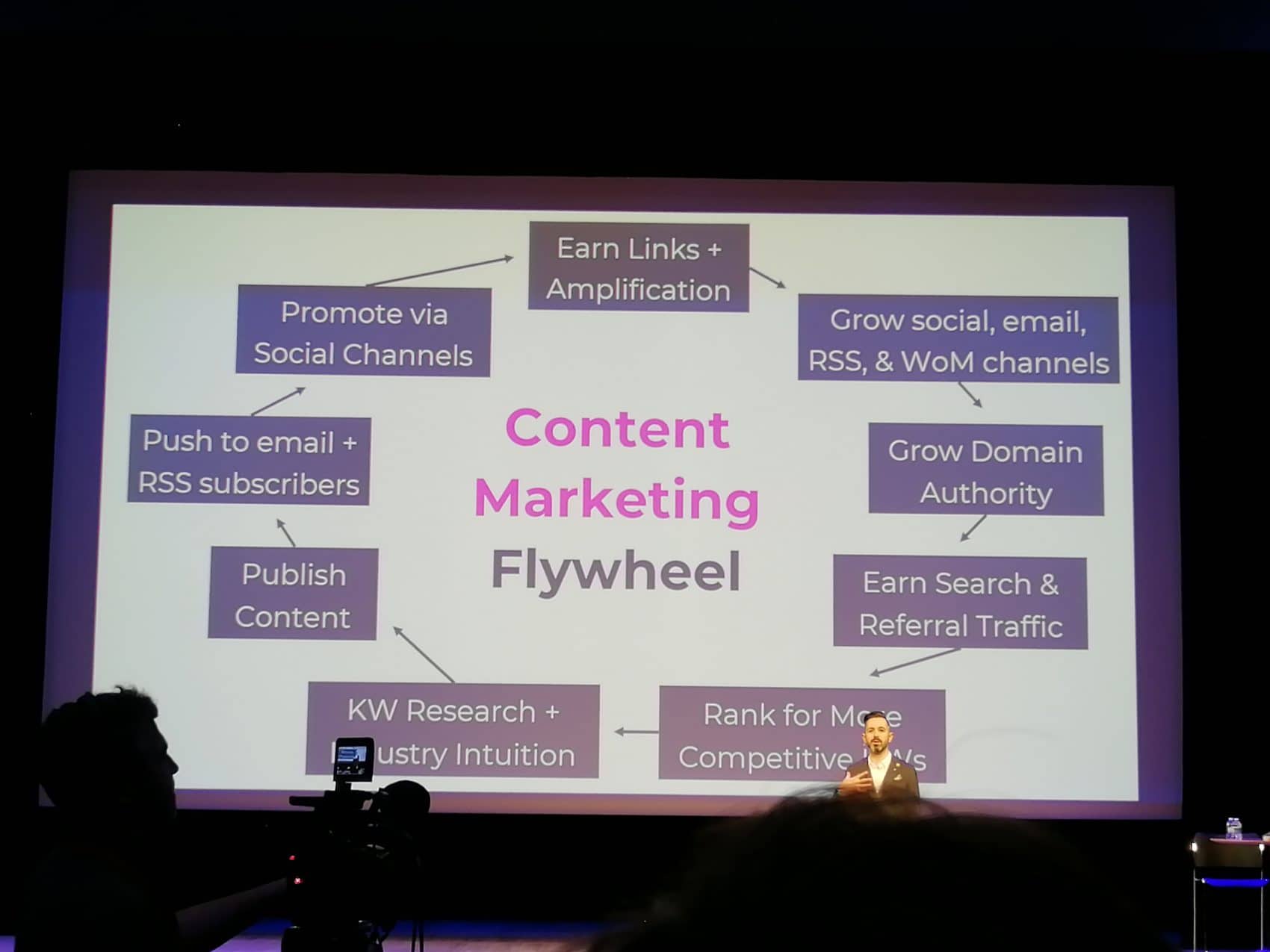
Be careful, however, growth hacks are not without benefits! They come into their own when you achieve friction in this spiral. For example, we can’t get our content out there through influencers so they can amplify it.
What would be the hack to remove this point of friction?
You’ve got three hours.
2.4/ Analyse AND use your personas
Creating buyer personas can prove to be complex. But it’s a critical step according to Rand. It’s not just about studying our targets in detail, but the content that they consume and the channels that they use.
The aim is to find every tool possible to reach our target. Here is a non-exhaustive list: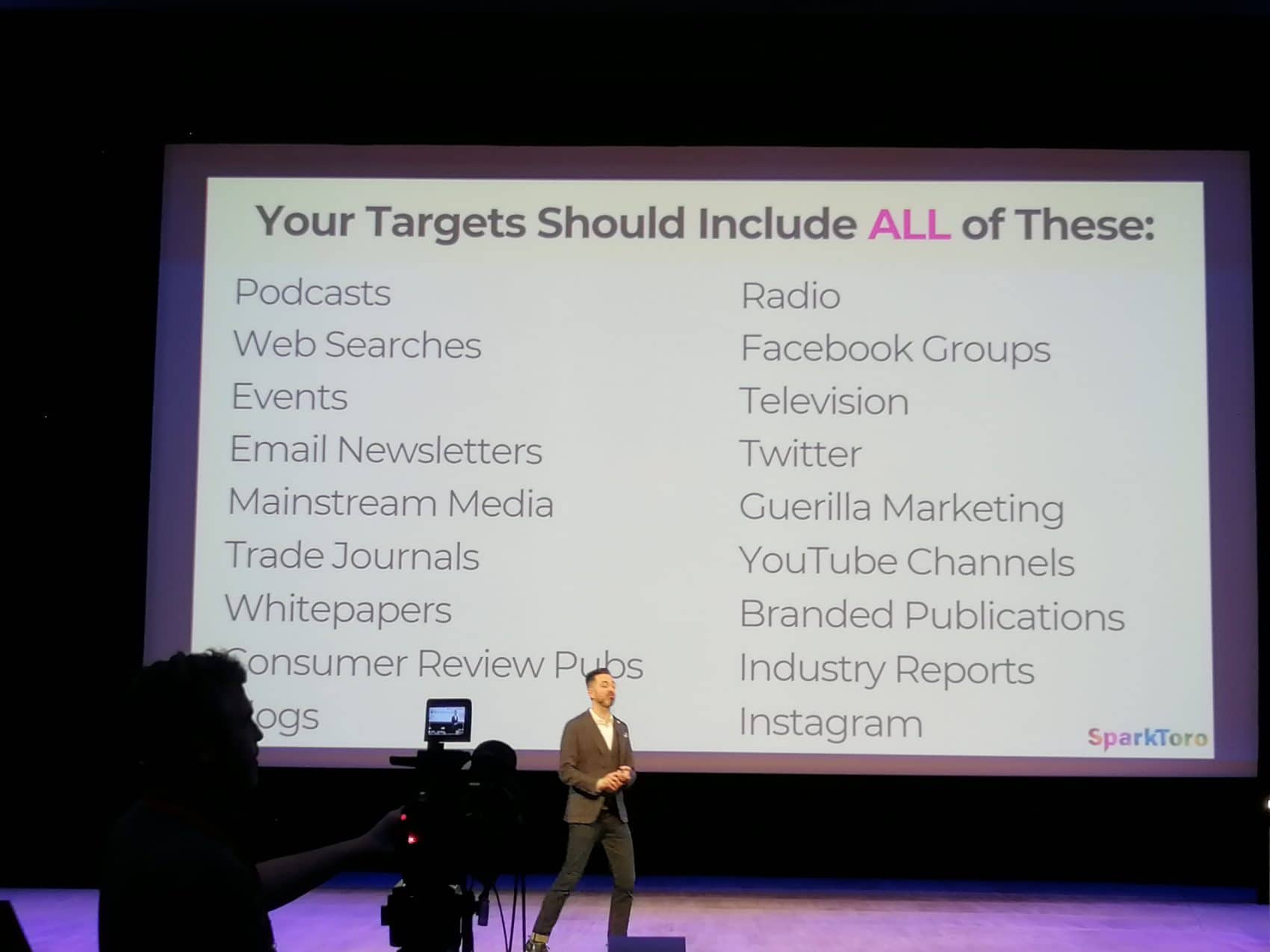
Analysing personas is so important in the eyes of Rand Fishkin that he created SparkToro, “a search engine for audience intelligence”, in other words, a search engine for analysing these personas: what they watch, what they listen to, what they read, who they follow and where they go…
3/5 tips for marketers to succeed from 2019
3.1/ Centralise content on your own site
Facebook, Google, Medium, LinkedIn… on whichever platform you publish your content, we are not immune to strategic changes that may affect our business.
However, no one can remove our site. LinkedIn may decide to reduce the visibility of your articles Medium may decide to charge a premium to publish articles Facebook may reduce its reach If our content is centralised on our site, it will never be lost. All of these platforms are just channels.
Equally, Rand advised us to keep control of our contact databases and to build our own email databases.
3.2/ Differentiating your channels
Centralising content on your website doesn’t mean not using these platforms as tools. For example, taking an article published on your blog, adapting it and reworking it, then publishing it on Medium and LinkedIn can prove to be very shrewd!
90% of people using Google, so do we put everything on Google? And what if, on the contrary, we were to optimise Bing given that our competitors pay not attention to it?
One thing is sure, you mustn’t put all your eggs in one basket.
According to Rand, email and contact database management are the number one channel. He generally prefers ten new email contacts in his database to 1000 new followers on Twitter. An opt-in database of contacts belongs to us, a subscriber base on a social network belongs to the social network.
3.3/ Less is more on social media
With figures to support this with his own accounts, Rand demonstrated that publishing something with few interactions will penalise future publications when posted. This is explained by the algorithms that favour good content, triggering “positive” spirals.
This discredits Hubspot’s theories which encourage you to publish more for greater visibility, since any “poor” publication could penalise your publications. Of course, it’s interesting to share your content on social networks and to automate a part of the work, but it’s better to share a message on your employees’ profiles rather than publish the same message ten times on your business account.
It’s worth noting that this theory of “less is more” works very well for SEO in order to combat “content shock”.
3.4/ Use your content for amplification
While Rand advocates being ultra-specific in your content and marketing, he recommends creating content that interests both your audience and influencers.
This may mean dealing with subjects that bear little relation to your products, but which allow you to expand your audience and to kills two birds with one stone.
At Plezi, for example, we could compare SEO software. Naturally, there is little interest here from a product/business point of view, but our audience would be interested. SEO software and gurus would be fantastic amplifiers too.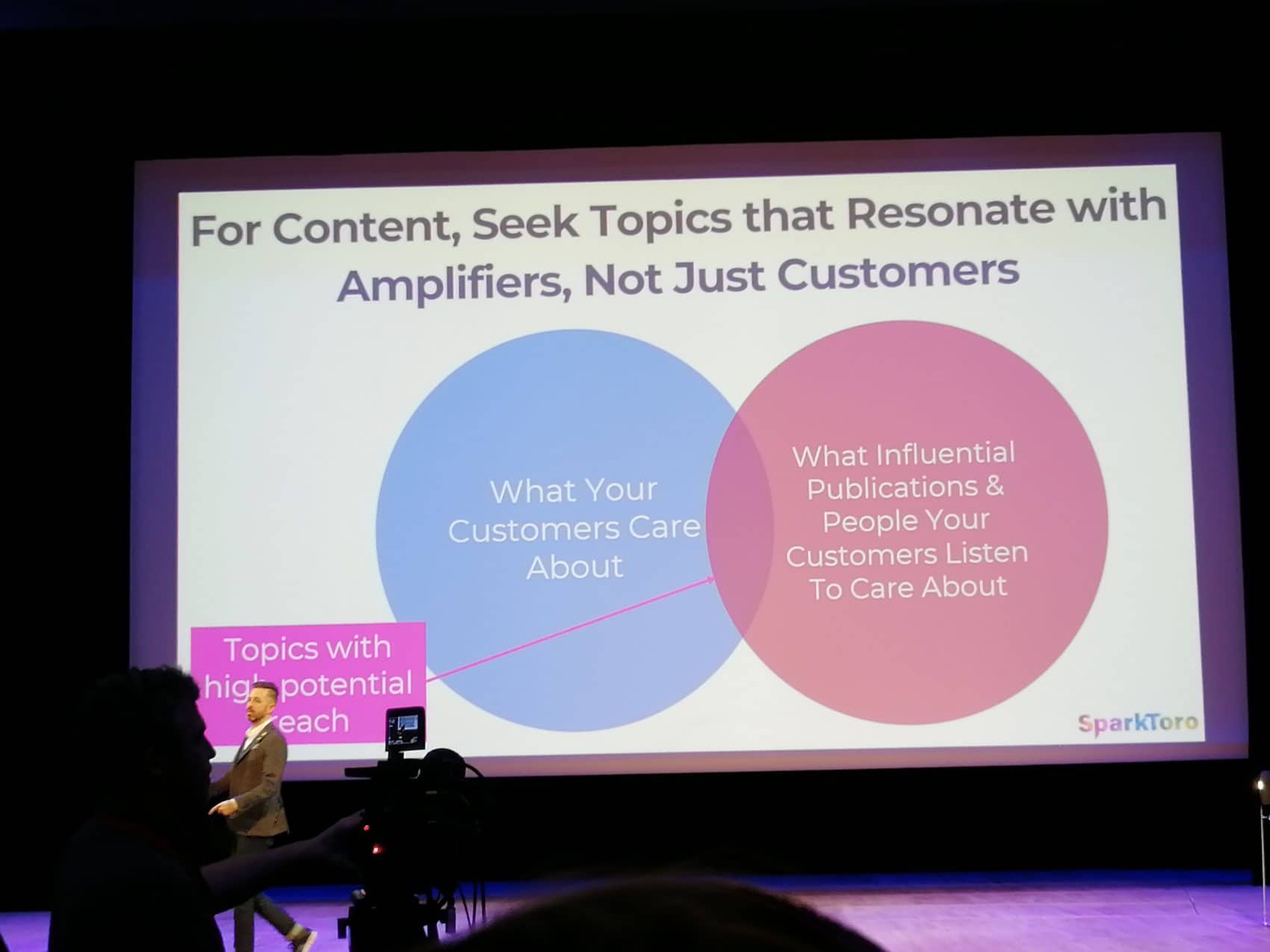
3.5/ Combine SEO and SEA
Rand doesn’t believe in advertising at all when he doesn’t know the brand. It is therefore pointless doing direct “request a demo” advertising with an unknown audience.
To start, you have to win the attention of your audience with interesting content (in other words, do Inbound), without trying to sell at any price.
Next, your work consists in attracting people to your website, capturing their contact details or getting them to subscribe to your social networks.
And this is where, and only where, you do “product” advertising for this audience, who already know you.
Upstream of the marketing funnel you use SEO, then SEA combined with marketing automation to convert and accelerate the buying process. With this technique, it is therefore pointless opting for an expensive CPC model because you utilise retargeting audiences.
Rand Fishkin shared is very pragmatic and concrete vision on web developments and the opportunities that B2B SMEs need to take hold of. There’s no “quick win” or “growth hacks” but a blend of good practices and processes to put in place, a need to step back, and above all, lots of hard word!




